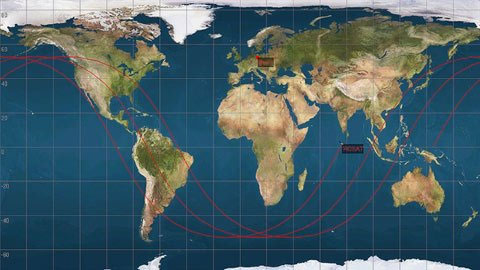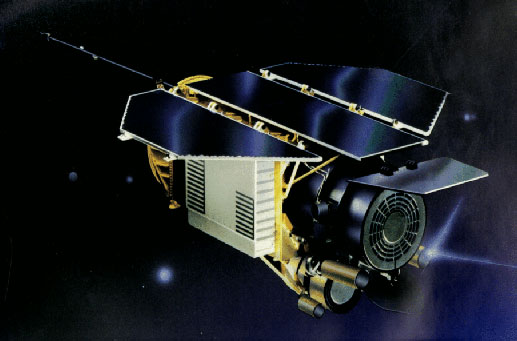Old satellites race each other to fall to Earth
The 2.5-ton ROSAT telescope will fall to Earth in late October and is likely to cause 1.5 times more casualties than UARS satellites.
Even if NASA's 6-ton UARS satellite does not cause any casualties or economic damage when falling to Earth today, next month, we have to be prepared to "catch " a chunk of trash. other pillars.

ROSAT can fall anywhere on Earth
ability to cause loss of people and of up to 1/2000. (Photo: DLR)
A German abandoned space telescope called ROSAT is expected to collide with Earth's atmosphere at the end of October, and its ability to cause human and property losses is higher than that of UARS. .
Currently, no one knows for sure what position UARS will fall on Earth. Even though most of its fragments will be burned when hitting the Atmosphere, about 26 large fragments, weighing about 532 kg, will still " survive " and crash into the ground.
According to NASA calculations, the ability of UARS to cause human and human damage is 1/3200. However, in late October or early November, in turn, the 2.4-ton X-ray telescope ROSAT (also launched by NASA in 1990) will fall back into the earth's atmosphere with the probability of injury. death is 1/2000.
The risk of ROSAT is 1.5 times higher than that of UARS because of technical requirements when designing X-ray projectors. The telescope's mirrors need to be heat-resistant very well because in 8 years of their life, the amount of heat that This projection is very large.
On ROSAT's website, DLR manufacturer estimates up to 30 fragments with a total weight of up to 1.6 tons that can fall to the Earth's surface. In particular, the X-ray optical system, with its stereoscopic and carbon-fiber composite structure, is the heaviest.

2.5 ton ROSAT telescope, launched by NASA
since 1990 and stopped operating since 1999.
Rosat has been inactive since 1999 and has been wandering in space since then, because the manufacturer has not designed a system to control the fall back to Earth. The timing as well as the falling position of Rosat cannot be accurately predicted because it depends too much on the activity of the sun.
Sharing with New Scientist , a NASA representative said the sun's activities caused the atmosphere to expand and suck "wandering" objects in space. The reason why UARS returned to Earth earlier than expected was because the sun's activity suddenly increased. And because thermal activity will peak in 2013, it is likely that the number of cases falling back to Earth such as UARS and Rosat will increase.
- Accurate fall point of German satellites
- GOCE satellite is about to fall to earth
- The satellite measures the attraction of the Earth to the end of fuel
- American artificial satellites fall on the following weekend
- The fall of satellites made the Earth
- Can the German satellite fall to Vietnam?
- Russia destroyed the military satellite
- Russian satellites are about to fall to Earth
- Satellite weighs 1 ton preparing to fall to Earth
- How do satellites melt in the Earth's atmosphere?
- Where can extraterrestrials reside?
- GOCE satellites fall straight into the Atlantic
 Van Allen's belt and evidence that the Apollo 11 mission to the Moon was myth
Van Allen's belt and evidence that the Apollo 11 mission to the Moon was myth The levels of civilization in the universe (Kardashev scale)
The levels of civilization in the universe (Kardashev scale) Today Mars, the sun and the Earth are aligned
Today Mars, the sun and the Earth are aligned The Amazon owner announced a secret plan to build a space base for thousands of people
The Amazon owner announced a secret plan to build a space base for thousands of people